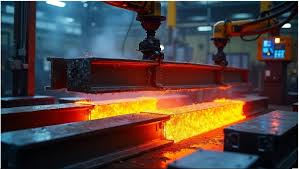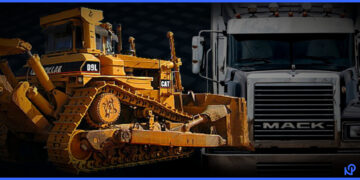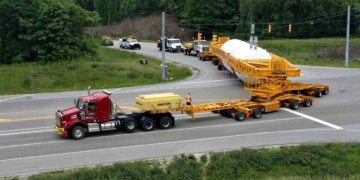Meta Description: Discover 5 proven advanced metal treatment methods that significantly reduce component wear, extend equipment life, and boost operational efficiency.
Wear is the silent killer of industrial equipment. Every day, friction, corrosion, and environmental factors chip away at metal components, leading to costly downtime, frequent replacements, and reduced operational efficiency. According to industry studies, wear-related failures account for approximately 70% of all mechanical breakdowns in manufacturing environments.
The good news? Advanced metal treatment techniques can dramatically extend component life and reduce maintenance costs. These sophisticated processes go beyond traditional surface treatments, offering superior protection against the harsh conditions that cause premature wear. Whether you’re dealing with high-friction applications, corrosive environments, or extreme temperatures, the right metal treatment can transform your equipment’s performance and longevity.
1. Plasma Nitriding for Superior Surface Hardness
Plasma nitriding stands out as one of the most effective treatments for reducing wear in high-stress applications. This process uses ionized nitrogen gas to create an extremely hard surface layer while maintaining the core material’s toughness. The treatment forms a compound layer that can achieve surface hardness levels of 1000-1200 HV, significantly higher than conventional heat treatments.
The process works by bombarding the metal surface with nitrogen ions in a controlled plasma environment. This creates a diffusion zone that gradually transitions from the hardened surface to the base material, eliminating the sharp interface that can lead to cracking in other hardening processes. Industries using plasma nitriding report wear reduction rates of up to 90% compared to untreated components, making it particularly valuable for gears, shafts, and hydraulic components.
2. Physical Vapor Deposition (PVD) Coatings
Physical Vapor Deposition represents a breakthrough in wear-resistant coating technology. This process deposits ultra-thin layers of materials like titanium nitride, chromium nitride, or diamond-like carbon onto metal surfaces through vaporization and condensation in a vacuum chamber. The resulting coatings are typically only 1-5 microns thick but provide exceptional wear resistance and low friction properties.
PVD coatings excel in applications where dimensional accuracy is critical because they add minimal thickness while dramatically improving surface properties. The coatings maintain their integrity at temperatures up to 500°C and provide excellent chemical resistance. Manufacturing companies utilizing PVD-coated tooling report tool life improvements of 300-500% compared to uncoated alternatives, translating directly to reduced replacement costs and improved productivity.
3. Cryogenic Treatment for Enhanced Durability
Cryogenic treatment, though less widely known, offers remarkable benefits for reducing wear through microstructural refinement. This process involves slowly cooling metal components to temperatures as low as -196°C using liquid nitrogen, then gradually returning them to room temperature. The extreme cold causes the metal’s crystal structure to become more uniform and stable, eliminating internal stresses that contribute to wear.
The treatment is particularly effective for high-carbon steels and tool steels, where it can increase wear resistance by 200-400%. Cryogenic treatment also improves dimensional stability, reducing the thermal growth and contraction that can cause premature wear in precision components. A professional burnishing service often incorporates cryogenic treatment as part of a comprehensive surface enhancement package to maximize component longevity.
4. Laser Surface Alloying for Customized Properties
Laser surface alloying allows for precise control over surface composition and properties by melting the surface layer and introducing alloying elements. This technique enables engineers to create custom surface compositions optimized for specific wear conditions without affecting the bulk material properties. The laser’s focused energy creates a metallurgically bonded layer that integrates seamlessly with the base material.
The process can incorporate various alloying elements such as chromium, nickel, or tungsten carbide particles to create surfaces tailored for specific applications. Laser-alloyed surfaces typically show hardness values of 50-65 HRC with excellent wear resistance in both abrasive and adhesive wear conditions. The precise control offered by laser processing means that only critical wear areas need treatment, making it cost-effective for large components.
5. Shot Peening for Fatigue Resistance
Shot peening works by bombarding the metal surface with small spherical media under controlled conditions, creating beneficial compressive stresses in the surface layer. While primarily known for improving fatigue life, shot peening also significantly reduces wear by creating a work-hardened surface layer and improving surface texture for better lubrication retention.
The compressive stresses introduced by shot peening can extend component life by 1000% or more in fatigue-critical applications. The process is particularly effective for components subject to cyclic loading, such as springs, gears, and structural elements. Modern controlled shot peening processes use precise parameters to achieve consistent results, with surface roughness and stress distribution carefully optimized for each application.
These advanced metal treatments represent proven solutions for reducing wear and extending component life across diverse industrial applications. By selecting the appropriate treatment based on specific wear mechanisms and operating conditions, manufacturers can achieve substantial improvements in equipment reliability and operational costs. The key lies in understanding your application’s unique requirements and partnering with experienced surface treatment specialists who can recommend and implement the most effective solutions.
SEO Keywords for Backlinking:
- service
- plasma nitriding process
- PVD coating applications
- cryogenic metal treatment













